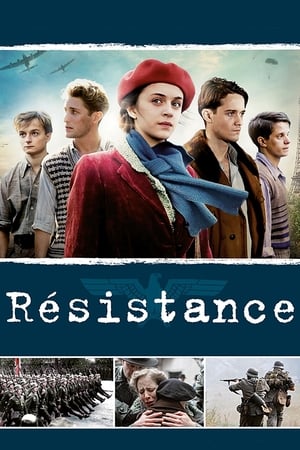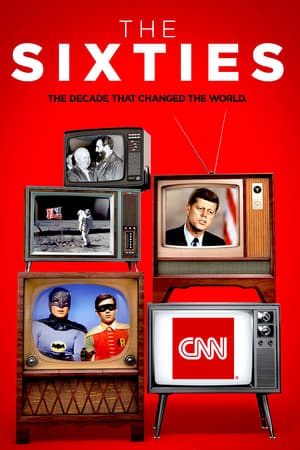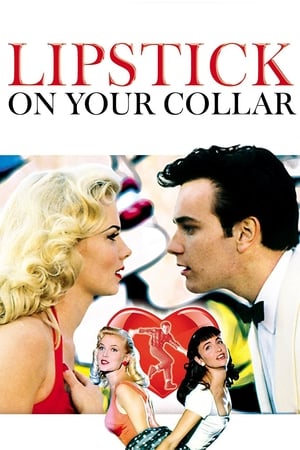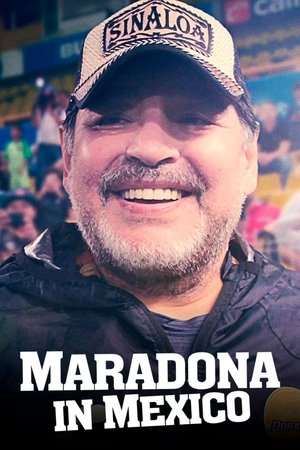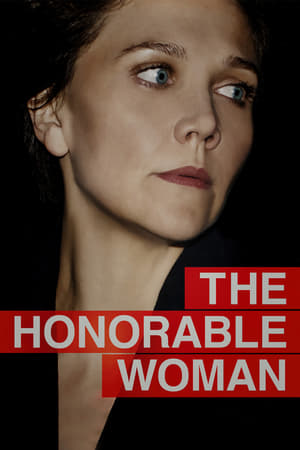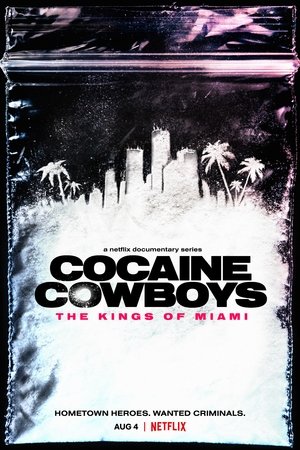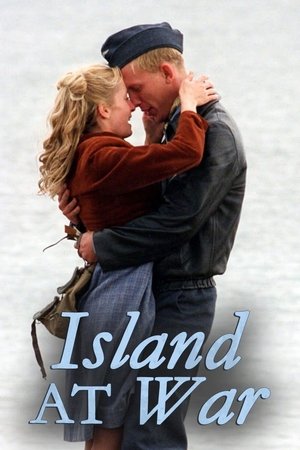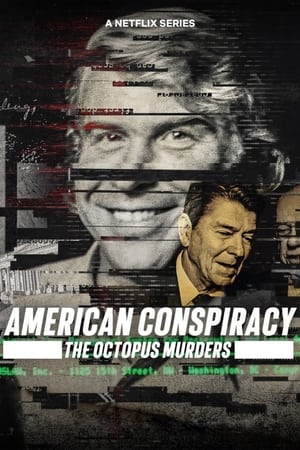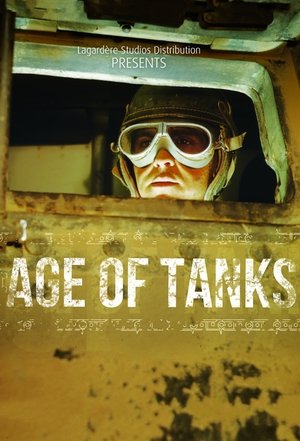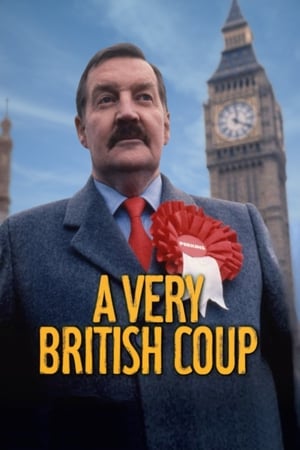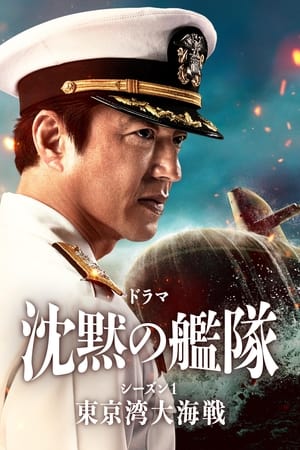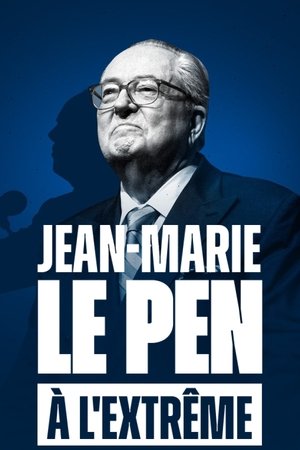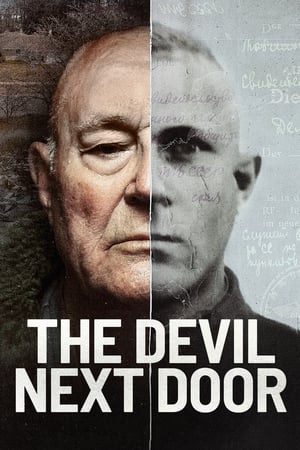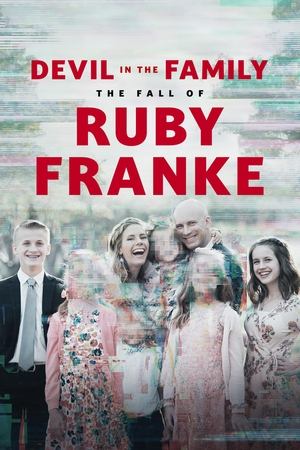Overview
An immersive 360-degree narrative telling the epic story of the Vietnam War as it has never before been told on film. Featuring testimony from nearly 80 witnesses, including many Americans who fought in the war and others who opposed it, as well as Vietnamese combatants and civilians from both the winning and losing sides.
Reviews
**_One of the finest documentaries ever made_**
> _We rationalised destroying villages in order to save them. We saw America lose her sense of morality as she accepted very coolly a Mỹ Lai, and refused to give up the image of American soldiers who hand out chocolate bars and chewing gum. We learned the meaning of free-fire zones – shoot anything that moves – and we watched while America placed a cheapness on the lives of Orientals. We watched the United States falsification of body counts, in fact, the glorification of body counts. We listened while, month after month, we were told the back_ _of the enemy was about to break. We fought using weapons against "Oriental human beings", with quotation marks around it, we fought using weapons against those people which I do not believe this country would dream of using, were we fighting in the European theatre. We watched while men charged up hills because a general said that hill has to be taken, and, after losing one platoon, or two platoons, they marched away to leave the hill for reoccupation by the North Vietnamese. We watched pride allow the most unimportant battles to be blown into extravaganzas, because we couldn't lose, and we couldn't retreat, and because it didn't matter how many American bodies were lost to prove that point_
- LT John Kerry (USN), Coastal Squadron 1; Addressing the United States Senate Committee on Foreign Relations (April 22, 1971)
> _I looked up; there were two jets, aiming directly at our command post. He's dropped two cans of napalm, and it's coming towards us, loblolly, end over end. And these kids, two or three of them, plus a sergeant, had dug a hole or two over on the edge. And I looked as this thing exploded, and I saw two of them dancing in that fire. And there's a rush, a roar, from the air that's being consumed and drawn in, as this hell come to earth is burning there. And as that dies back a little, then you can hear the screams. And I heard someone yell, "Get this man's feet." And I reached down, and the boots crumbled, and the flesh cooked off of his ankles, and I felt those bones in the palms of my hands. I can feel it now. He died two days later._
- Joseph L. Galloway
> _All these civilians had been herded into the university. They had all gone there to get the hell away from having grenades thrown in their living rooms. And one of the guys comes in and says, "I found this girl who'll fuck us all for C-rations." And I'm thinking, "Wait, we're in the middle of this big battle and I'm gonna go and do this?" But I'm nineteen years old and my buddies are gonna do it. I demonstrated to myself that day how little courage I actually had. I've lived with it ever since, but I did it because I wasn't gonna say, "Guys, we shouldn't do something like this." Even more than the killings, it's the thing I think I'm most ashamed of when I think back on the time I spent there. I think it's because my mother's a woman, my wife's a woman, my daughter's a woman. Somebody gets shot, not a good thing. You see somebody running away, could've been a VC. But that woman? Nah. I had every opportunity to say no._
- Sgt W.D. Ehrhart (USMC), 1st Battalion 1st Marines (1/1)
> _While the bombs were falling, only a stone wouldn't be terrified. If the Americans noticed movement in the forest, they would eliminate the forest. Who knows how much money was spent? American taxpayers' money. If a cluster of napalm bombs were dropped, the jungle would turn into a sea of fire. Can you imagine a sea of fire? Of course, a soldier's life is miserable. Even American soldiers were miserable. A young man like Tim O'Brien, he was really miserable. But they weren't starving, they couldn't starve. We had to forage for food. Our army gave us only a bit of rice and salt. We were always searching for American food. They called them C-rations. A regular American soldier carried enough food for a picnic, everything you'd want._
- Hoàng Âu Phương (aka Bảo Ninh), PAVN, Glorious 27th Youth Brigade
Described by the show's official website as "_an immersive 360-degree narrative_," _The Vietnam War_ is a behemoth in every sense of the word; written by historian Geoffrey C. Ward and directed by celebrated documentarians Ken Burns and Lynn Novick, the series cost $30 million to make, and was in production for over ten years, with the ten episodes running to a gargantuan eighteen hours. Assembled from over 24,000 photos and 1,500 hours of archive footage, the show features interviews with 79 people, including analysts, bureaucrats, journalists, artists, anti-war protestors, draft dodgers, conscientious objectors, deserters, Gold Star family members, and American, South Vietnamese, and North Vietnamese troops. Deliberately eschewing interviews with historians and major polarising figures such as Carl Bernstein, William Calley (2LT; USA) Daniel Ellsberg, Jane Fonda, John Kerry (LT; USN), Henry Kissinger, John McCain (CAPT; USN), Oliver Stone (PVT; USA), or Bob Woodward, the show features instead such lesser known and (relatively) less controversial figures as Max Cleland (CPT; USA), Huy Đức, Duong Van Mai Elliott, Roger F. Harris (1stLt; USMC), Mike Heaney (2LT; USA), Lê Minh Khuê, Hal Kushner (CPT; USA MC), Karl Marlantes (1stLt; USMC), John Musgrave (Cpl; USMC), and Vincent Okamoto (CPT; USA).
Constructing what they define as a "_ground up_" approach, Burns and Novick concentrate almost exclusively on the experiences of ordinary people and soldiers from every side. In the introduction to The Vietnam War: An Intimate History, the series's official companion book, they write,
> _from the start, we vowed to each other that we would avoid the limits of binary political perspective and the shortcuts of conventional wisdom and superficial history. This was a war of many perspectives, a Rashomon of equally plausible "stories", of secrets, lies, and distortions at every turn. We wished to try to contain and faithfully reflect those seemingly irreconcilable outlooks._
With this in mind, the series attempts to balance multiple perspectives; the American military and government, the South Vietnamese military and government, the North Vietnamese military and government, the anti-war movement, Gold Star families, journalists, and the intelligence community.
And to say they do a fine job with this delicate balancing act is an understatement as epic as the series itself. In short, as a piece of documentary filmmaking, this is a masterpiece.
Burns had initially wanted to make a Vietnam documentary in the 1980s, but had determined the county's psyche wasn't yet ready, particularly in light of the vehement right-wing condemnation of _Vietnam: A Television History_, a 1983 PBS documentary which was emphatic in its argument that the war was fundamentally dishonourable. Even now, however, in 2018, the war continues to stimulate passionate debate, predicate ideological division, elicit emotions varying from pride to shame, and raise unanswerable questions; speaking to _Vanity Fair_, Novick points out,
> _there's no agreement among scholars, or Americans or Vietnamese, about what happened._
Telling the story of a conflict, to quote the film itself,
> _begun in good faith by decent people, out of fateful misunderstandings, [and] prolonged because it seemed easier to muddle through than admit that it had been caused by tragic decisions,_
the show begins in reverse; following a brief introduction, the archival footage literally begins to run backwards, as we see a series of familiar images; a helicopter rises from the sea and is pulled back from the edge of an aircraft carrier, the Ohio National Guard lower their weapons and back away from protesting Kent State students, Phan Thị Kim Phúc runs backwards towards the village of Trảng Bàng, Nguyễn Văn Lém rises from the ground as the bullet that killed him returns to Nguyễn Ngọc Loan's gun, the fireball engulfing Thích Quảng Đức disappears. It's an unusually stylistic opening for a documentary, especially a multi-part documentary on public television, but there is an important conceptual point in this aesthetic decision; reversing such familiar images works as an opening thematic statement – yes, we all know these pictures, we've all seen them before, but this series is going to show them to us anew.
Beginning with the French invasion of Indochina in 1858 and concluding with the opening of the Vietnam Veterans Memorial in Washington, DC in 1982 (although some brief postscript material goes up to President Barak Obama's visit to Vietnam in 2016), the series hits all the beats you'd expect within this timeframe – (deep breath) the rise of Hô Chí Minh and the formation of the Việt Minh; the Korean War; President Dwight D. Eisenhower's "domino theory"; the Battle of Diên Biên Phu, and subsequent French withdrawal from Indochina; the rise of Lê Duẩn and the formation of the Việt Cong; President John F. Kennedy's decision to send military advisers into South Vietnam; the Battle of Âp Bác; Thích Quảng Đức's self-immolation; the Gulf of Tonkin incident; President Lyndon B. Johnson's reluctant escalation of the war; the Battle of Bình Giã; the rise of the anti-war movement in the US; the Battle of Ia Drang; Operation Rolling Thunder; the Battle of Đák Tô; the Têt Offensive; the Siege of Huê; the 1968 Democratic National Convention; the election of Richard Nixon; the Battle of Hamburger Hill; the Moratorium to End the War in Vietnam; the Kent State shootings; Operation Lam Son 719; "Operation Dewey Canyon III"; the Pentagon Papers; the Easter Offensive; "The Terror of War"; the Watergate scandal; the Paris Peace Accords; Nixon's resignation; and the Fall/Liberation of Saigon. Phew!!
Within this material, as would be expected of any documentary worth its salt, the series throws up a sizable number of hard to believe facts. For example, between 1955 and 1975, the US flew over thirty-six million helicopter sorties; more bomb tonnage was dropped by the Americans on North Vietnam than by all the participants of World War II combined; only 20% of American personnel deployed to Vietnam ever saw active combat; approximately 30,000 Canadians volunteered for service during the conflict, roughly the same number of Americans who moved to Canada to avoid being drafted; by the time of the Fall of Saigon in 1975, South Vietnam had the fifth-largest army in the world; the Hô Chí Minh Trail through Laos was maintained primarily by women.
However, where _The Vietnam War_ excels is not in trying to present an all-inclusive encyclopaedic summary of everything that happened in the war, but in its mixture of the macro and the micro – intercut into the larger framework of political analysis and military assessment are more relatable and personalised interviews, which serve to reinforce what the war was like for the people who actually fought it, and their families back home. So, for example, the mother and sister of PFC Denton "Mogie" Crocker, USA, 2nd Battalion 502nd Infantry Regiment (2-502nd INF), speak of learning he had been killed aged just 19; Roger F. Harris talks of trying to match dismembered body parts whilst stationed at the heavily shelled Côn Tiên base near the DMZ; John Musgrave relates how he had to explain to his children why he is unable to sleep without a nightlight; W.D. Ehrhart discusses his shame at having had sex with a young Vietnamese girl who slept with any American in return for C-rations; Hal Kushner describes his six years as a POW; 2LT Joan Furey, AN, 71st Evacuation Hospital, recalls trying to hold the back of a young soldier's head together; and Nguyễn Thanh Tùng describes losing her husband, all eight of her brothers, and both of her sons between 1953 and 1975.
These human stories serve as Burns and Novick's "_ground up_" material, helping to contextualise the wide-ranging and less personal socio-political canvas against which they are set, never allowing the audience to view the conflict as a statistical abstraction or a dry chronological list of battles. Indeed, in relation to this, one of the most immediately and consistently obvious aspects of the series is Burns and Novick's respect for the individual combatants on all sides. Speaking to the _Washington Post_, Burns says,
> _it was super important for us in a war that has no outward redeeming feature to leave you with the realisation that sometimes it is the sum total of the heroic contributions of individual people in many different spheres._
If the micro is the show's heart and soul, however, the macro makes up the bulk of its content, and in this sense, perhaps the central-most theme is how the Kennedy, Johnson, and Nixon administrations each got deeper and deeper into the conflict despite knowing it was a mistake to do so and that the war was either unwinnable altogether, or could only be won with unacceptable losses. Although they continually assured the press and public that things were going well, and the North Vietnamese would soon surrender (the first commander of US forces in Vietnam, GEN William Westmorland (USA), continually assured Johnson they were reaching the "_crossover point_" – when the North Vietnamese would be losing troops faster than they could replace them), behind the scenes all three presidents knew the situation was dire (perhaps best summed up in Johnson's 1964 comment to APNSA McGeorge Bundy, "_I don't see what we can ever hope to get outta there once we're committed. I don't think it's worth fighting for and I don't think we can get out_").
On the macro level, one of the most salient points is the assertion that in 1968, Nixon secretly sabotaged the fledgling Paris Peace Accords by sending Anna Chennault, a Republican fundraiser and widow of LTG Claire Lee Chennault (USAAC), to encourage South Vietnamese President Nguyễn Văn Thiệu to boycott the talks, promising him a better deal under a Nixon administration than he could get under a Democratic president. When Nixon then publically vowed to visit Saigon to 'convince' Văn Thiệu to return to the table, should he be elected, the possibility that he might yet save the peace talks which the Democratic Party had seemingly bungled gave him an unassailable lead over his rival in the presidential race, Hubert Humphrey. Five days later, Nixon won the presidency. Although Burns and Novick avoid, for the most part, partisanship and finger-pointing, this section is especially intriguing and well put together, displaying its bias as a badge of honour – Nixon's determination to become president and achieve public adulation overrode any concept of morality or even sensible policy, irrespective of the suffering such a course of action would cause. If the documentary has a villain, it is, perhaps unsurprisingly, Nixon, and much of the root cause of that role is laid out here.
A second major theme throughout the series is the effect the war had on the American psyche. Whilst the first episode outlines how the US emerged from World War II as world leaders, convinced of its own irrefutable morality and righteousness, proud of its self-appointed role as global law enforcer, the later episodes detail, often through the personal experiences of returning Vets, how all of this changed during the war. Fought in a country few Americans had even heard of, and fewer still knew anything about, the war was a conflict whose ultimate futility at so great a cost was unlike anything any living American had seen. The stain of the war lingered for decades, and lingers still – after all, it was the first "televised war", meaning the unbeatable US lost in front of a global audience. As the documentary lays bare, Vietnam fundamentally redefined the notion of American patriotism, altered the constitution of the American zeitgeist, and undermined the concept of American exceptionalism, which was so vital a component of how the US conducted itself on the international stage. The documentary pulls no punches in this regard, with many of the interviewees opining that the country still has a long way to go before it has fully recovered.
A third vital theme, but one which remains unsaid, left for the viewer to provide the connective tissue, is how the domestic events of the war are mirrored in contemporary American society. For example, as the government continued to insist that things were going well, journalists began to report a very different story, leading to the rise of the "credibility gap" – the disparity between the claims made by the government in regards to a situation, and the actual facts of that situation. An especially pertinent example is the Cam Ne incident of August 1965, when CBS broadcast a piece from correspondent Morley Safer which showed the 1st Battalion 9th Marines burning the houses of civilians. The following day, Johnson called CBS president Frank Stanton, to accuse Safer of defacing the American flag and assisting the enemy, whilst also speculating that he was probably a Kremlin agent. The USMC also claimed, falsely, that Safer had provided the zippo lighter to start the blaze.
It doesn't take a genius to see the relevance here – the credibility gap is a direct progenitor of "fake news" and, even more directly, "alternative facts", both of which are specifically associated with the Trump administration. However, although Burns (who has been sharply critical of Trump in the past) and Novick ensure the viewer understands the empirical message that the war destroyed lives and minds, and eviscerated the trust the American people had for their government (Musgrave speculates, "_we were probably the last kids of any generation that actually believed our government would never lie to us_"), they never explicitly state that the socio-political fabric of the 60s and 70s finds echoes in the present day.
However, speaking to _The New York Times_, Burns states,
> _the seeds of disunion we experience today, the polarisation, the lack of civil discourse all had their seeds in Vietnam._
Similarly, in the documentary itself, CPT Philip Gioia, USA, 1st Battalion 5th Cavalry Regiment (1-5 CAV) opines,
> _I think the Vietnam War drove a stake right into the heart of America. It polarised the country as it had probably never been polarised since before the Civil War. And, unfortunately, we've never moved really far away from that. And we never recovered._
Burns and Novick make no further comment on this, but the accuracy of Gioia's opinion is borne out time and again throughout the documentary.
Undoubtedly, the war was the most divisive period in the US since the Civil War. However, the most divisive period since the war is right now, where the parallels to the 60s and 70s are extraordinary; the US is currently in the seventeenth year of a war begun under dubious circumstances; there are accusations of foreign collusion in a US election; the president has threatened to use force against an Asian nation (Nixon considered dropping a nuclear bomb on Vietnam); there are mass demonstrations across the country; the White House is obsessed with leaks; Johnson and Nixon's attempts to undermine the media, and Nixon's attempts to delegitimise any and all opposition are echoed in Trump's unfounded accusations that the Democrats, for example, paid Dr. Christine Blasey Ford to testify against Brett Kavanaugh, and falsely inflated the death toll in Puerto Rico in the wake of Hurricane Florence. His belittling of John McCain ("_He's not a war hero. He was a war hero because he was captured. I like people who weren't captured_," said five-time draft-deferee Trump) also falls into this last category.
From an aesthetic point of view, one of the most impressive aspects of the documentary is the soundscape. The soundtrack features songs from over 120 contemporary artists, including Bob Dylan, Simon & Garfunkel, The Byrds, and Nina Simone. Some of the songs are a little too obvious, too on the nose, but the score more than makes up for that, with the harsh metallic sounds of Trent Reznor and Atticus Ross, contrasting and interacting with a series of Vietnamese folk songs performed by Yo-Yo Ma and the Silk Road Ensemble. Also worth mentioning is something that rarely stands out in a documentary – the foley. Listening to the series on a good sound system, the whirls of rotor blades rise from the surround speakers, the effects of napalm suck the sound into the TV before blasting it back out, bullets whizz past the viewer's head, far off artillery rumbles deeply in the subwoofer, radio chatter spills through the jungle. It really is an immersive experience, as impressive as any big-budget film, and the sound team deserve special praise for this.
Ideologically speaking, perhaps, the best sign that Burns and Novick have succeeded in creating a deeply probing documentary is that they anticipated (and received) condemnation from both the left and the right. Speaking to _The New Yorker_, Burns asserts,
> _after The Vietnam War, I'll have to lie low. A lot of people will think I'm a Commie pinko, and a lot of people will think I'm a right-wing nutcase._
In this, he was proven correct. However, if something angers both sides of the political divide the way this series has done, then the filmmakers have done something very right. For example, on the left, historian Thomas A. Bass has criticised the show for attempting to legitimatise the US's involvement in Vietnam;
> _the war has been framed as a civil war, with the United States defending a freely elected democratic government in the south against Communists invading from the north. American boys are fighting a godless enemy that Burns shows as a red tide creeping across maps of Southeast Asia and the rest of the world._
He is also deeply critical of the show's "_conservative credentials_". On the right, however, scholar Mark Moyar has argued literally the exact opposite; that the show spends too much time criticising the US's involvement;
> _Burns and Novick wish to show that America fought a war that was unnecessary and unwinnable, and that it did so out of national hubris. With the consistency of a jackhammer, the documentary highlights the events most conducive to a negative interpretation of American involvement, while ignoring those supporting more positive interpretations._
Also on the right, Alex Shepard argues,
> _in their ostentatious rejection of ideology, they have sneakily put forth their own: that these rival perspectives are of equal value. It is an ideology that is increasingly out of step with our times._
In direct contrast to this, Bass believes the show doesn't go far enough in establishing ideological balance;
> _instead of its search for "closure" and healing reconciliation, what if the film had reminded us that US special forces are currently operating in 137 of the planet's 194 countries, or 70 per cent of the world?_
That opposing writers can have such diametrically antithetical views is as good a testament as any as to the series's scope, inclusiveness, perspicaciousness, and emotive success.
However, it's not perfect. Easily the most obvious criticism is that despite their claims that all sides are represented equally, there is a real imbalance (as Moyar points out) between the anti-war movement (represented by three interviewees and dozens of Vets), and those who supported the war (represented by a few comments here and there from people who admit they were conflicted). This imbalance is also present, although less conspicuous, in the number of North Vietnamese combatants (fourteen) weighed against the number of South Vietnamese combatants (seven).
There are also some notable, and oftentimes bizarre, omissions. For example, there is no mention whatsoever of Maj Gen Edward Lansdale (USAF), who was pivotal in Ngô Đình Diệm's victory in the rigged 1955 presidential election, and who famously stated, "_there is only one means of defeating an insurgent people who will not surrender, and that is extermination_." Likewise, there are no references to LTC John Paul Vann (USA), who was publicly critical of how the US was conducting the war, at a time when the vast majority of Americans and most of the press were happy with how things were going. Also absent is MG Lê Văn Viễn (aka Bảy Viễn), commander of the Bình Xuyên, an autonomous criminal organisation within the Vietnamese National Army during the years of French occupation
However, in relation to omissions such as these, speaking to New American Media, Burns explains,
> _we cannot tell every story. Even if it were 180 hours, people would say, 'You left this out.' What you want to do is tell a story in which this Gold Star mother had to stand in for lots of Gold Star mothers, and this Saigon civilian has to stand in for many Saigon civilians, and this ARVN marine has to stand in for many, many ARVN marines. But we feel that we put our arms around everything._
_The Vietnam War_ is an undeniably epic achievement. Burns and Novick have distilled down a massively complex canvas of competing ideologies, whilst at the same time refusing to placate either side (avoiding "_the limits of binary political perspective_"). This refusal leaves the series open to criticism from both sides, but it may also be the show's greatest strength. Rather than submitting to partisan politics, the series follows its own path, irrespective of how it appears to those with preconceived notions. As harrowing as it is insightful, as informative as it is disturbing, conciliatory rather than condemnatory, _The Vietnam War_ is a masterpiece, and surely one of the finest documentaries ever made.

 English
English
 8.21
8.21
 2017
2017
 USA
USA
 Stephen Campbell wrote:
Stephen Campbell wrote:
